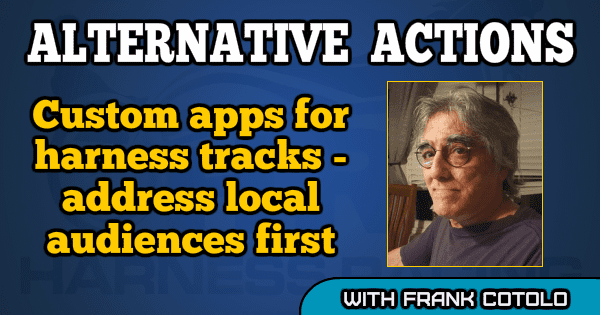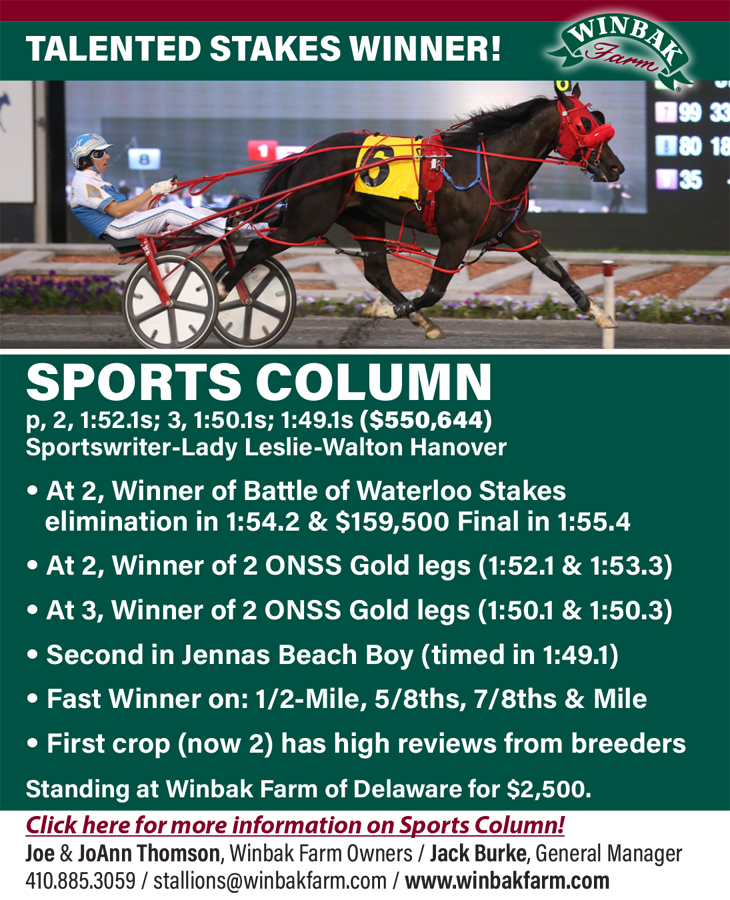
Custom apps for harness tracks – address local audiences first
by Frank Cotolo
Last month we wrote about the pari-mutuel audience statistics related to mobile media because digital mobile devices are becoming the audience’s major tool for contact with entertainment sources. This month, we offer racetrack management some ideas to put to use to enhance its track’s presence on the “mobile platform.” I remind readers that any and all of the ideas we present in this column are free to use as we explain them or as they may be expanded upon or altered or as inspiration for other ideas that serve a purpose for current and novice patrons — the bettors.
Before diving into the think tank, however, racetrack managements should be aware of how imperative it is to take action on during this summer of 2018. Tracks are already behind if they stall and there is a good reason why this is true. Recently, Pennsylvania created its “ilottery.” Now, state mobile-devices have applications that present access to information concerning their products — lottery tickets. This measure of convenience is already sweeping the United States, from what research we have done.
The app revolution for state lotteries has already impacted lottery business in Maryland, Illinois, Massachusetts and California, to name a few. It won’t be long before all of the states offering local-and-national lottery promotion will be accessible on the mobile platform.
The app revolution has prompted states to create more games to their lottery menu. Based on the mindless ability to pick-numbers-any-numbers in order to play, the games are packaged and designed as if each offers anything different than the other. Scratch-off games and state-drawn number games are power-packaged with comic-book-like art splashes to attract a bettor. Pennsylvania, for instance, has iLottery games called Monster Wins, Super Gems, Bigfoot, Foxin’ Wins, Robin Hood and more.
Your racetrack should counter-attack. As Bugs Bunny once said, “Of course you know, this means war!”
Raceways already have a digital presence, of course. They have Twitter accounts, Facebook pages and official websites. They share space at online wagering sites (ADWs) and simulcast areas at other raceways. However, there needs to be more individual identification for a track; there needs to be an app that delivers all bettors track-specific information that easily assists and incites the business of betting.
For instance, let’s explore an app for the fictional Delaney Harness Raceway (DHR). What could it offer to all of its local audience, as well as the intercontinental audiences that peruse its programs? General and specific but severely current information focused solely on wagering at DHR is imperative. You must, however, keep it simple yet important to the betting experience.
Generally, include local announcements about betting. List all of the exotic wagers offered during that meet and update any carryovers. Emphasize the costs of your exotics, since those prices change from track to track. A 50-cent Triple (Trifecta, Triactor) at DHR, for instance, may be the minimum bet for that exotic but at Mayberry Raceway (which your local patron can only get on line or at a simulcast area) the minimum is $1.00. As well, at Thrifty Raceway the minimum for a Superfecta could be 20 cents while a “Super” at DHR has a minimum of 10 cents. It’s remarkable how this simple wagering information is not always available at various tracks in programs or on the in-house broadcasting “probable payoff” lists.
Another exclusive the app could offer is local statistics. The key word here is “local.” These kinds of information bits have built-in value and are pertinent for wagering only at DHR (per se). Instead of the usual driver or trainer standings, list standings based only upon win percentages. These are easy to compute for your app editor and can contribute greatly to a player’s measure of driver and trainer when betting.
Let’s use a real example this time. At Georgian Downs, trainer Jack Darling’s position in the trainer standings one season was a tie for fourth when listed by wins, as are most track standings. Darling had 12 starts with nine wins. The first-place trainer, Richard Moreau, had 92 starts with 21 winners. Were the standings that meet placed in the order of trainer-win percentages, Darling would be in first place with a 75-per cent average for winners. Moreau would drop drastically, since there were 13 other trainers with a win percentage higher than 22 per cent.
Add as many local stats as you like. If you add a top-drivers’ list, be sure to list the resident drivers by wins using percentages. Have a “Horses In Trouble” list with brief remarks about recent horses that broke or were flushed to the outside or suffered from interference. Be as creative as you want with local info as long as it is useful information for the bettor. In fact, call the app by the track name with a tag, as in Delaney Harness Raceway Bettors Almanac and include coupons for free stuff (your choice of items) bettors can cash in when showing up to play in person.













